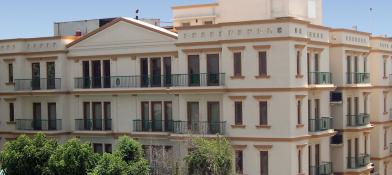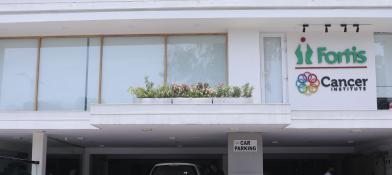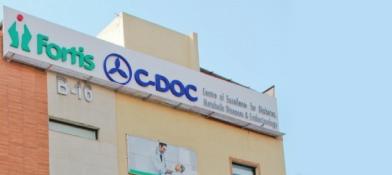Lumpectomy
Overview
A lumpectomy is a surgical procedure of removing abnormal tissues from the breast while conserving normal tissue. Cancerous and abnormal tissue around the breast and healthy tissue is removed. It does a wide local excision of abnormal tissue. A lumpectomy is one of the treatment options for early-stage breast cancer.
It is a type of excisional biopsy or quadrantectomy. It is called a breast-conserving surgery as local abnormal tissue is removed, and healthy breast tissue is retained. While mastectomy removes the entire breast tissue, lumpectomy retains some of the breast tissue by removing abnormal and a part of healthy tissue. Hence, it is called partial mastectomy or segmental mastectomy.
Indications
A lumpectomy is indicated when most of her breast tissue can be preserved after having the abnormal tissue removed. It is stated in early-stage breast cancers. It is shown when the abnormal growth of breast tissue is not associated with genetic mutations like the BRCA or ATM mutations. It is done when the abnormal tissue in the breast is small compared to the breast size (less than 5 cm). It is done for those women who are concerned about losing their breast. It is done when the tumor is in the early stage and the individual is ready to undergo radiation therapy. It is also indicated when there are multiple small areas of abnormal tissue in one quadrant that can be removed together without the need to remove the entire breast tissue.
Contraindications
Lumpectomy is not indicated when an individual has a history of scleroderma, which hardens the skin and other tissues. It is not advisable in chronic inflammatory conditions like systemic lupus erythematosus. It cannot be done when there are two or more tumours in different quadrants of the breast. It cannot be done when an individual has had radiation therapy done before. It is not advisable in cancers that have spread to the skin or are larger. The small size of the breasts and large size of the growths are contraindicated for this treatment. It is also not an advisable treatment option when radiation therapy is not available.
Before Lumpectomy
Before undergoing a Lumpectomy, one should get a surgical profile done. It includes blood tests, urine tests, and an Electrocardiogram (ECG), along with physical examination and imaging tests like ultrasound or mammogram to locate the abnormal tissue in the breasts. Healthcare professionals (HCPs) can understand the functioning of other organs, get information about the current general health status, and help them identify any factors that may interfere with healing, like diabetes or any infections. An Electrocardiogram is done to check the electrical activity of the heart, as well as a chest x-ray is done to check the functioning of the lungs.
Certain medications like blood thinners or over-the-counter medications should be stopped. Surgeons might prescribe some other medicines that can prepare one for surgery. Smoking and alcohol consumption should be stopped. A lumpectomy is done on an empty stomach. Hence, avoiding eating or drinking 8-12 hours before the procedure is better.
Before the surgery, localization of the abnormal tissue is done. Abnormality in the breast tissue is located using a mammogram or ultrasound. A thin wire, a needle, or a radioactive seed is sent to the area needing removal. In the case of palpable masses, this need not be done to locate the abnormal tissue.
Sometimes, abnormal lymph nodes must be removed during the surgery. The lymph nodes to which the abnormal tissue (cancerous tissue) drains are identified. These are identified by injecting a radioactive substance into the area around the cancer and determining the node to which it drains. These are called the sentinel nodes. These have to be removed along with the abnormal tissue and sent to pathological examination.
No lymph nodes will be removed if any abnormal tissues are absent. If there are one or more lymph nodes that are cancerous, then lymph nodes of the armpits might also have to be removed.
During the Procedure
A lumpectomy is done under general anaesthesia. Post cleaning the surgical site with an antiseptic, the surgeon makes a cut or incision over the area with the wire or the radioactive seed. The abnormal breast tissue with a part of healthy tissue is removed and sent to a laboratory for pathological examination. Sentinel node biopsy will also be done based on the involvement. Sutures are placed to preserve the appearance of the breast.
After the Procedure
Individuals will be closely monitored in the recovery room till the anaesthesia wears off and the vitals are stabilized. They will be prescribed certain antibiotics and painkillers to reduce pain and infection. Strenuous activities must be avoided for about six weeks. Post-surgical care will be provided on the dressing.
The Success of Lumpectomy
A Lumpectomy is considered successful when there is no recurrence of the growth or cancer. The tissue excised during surgery is sent to the lab, where the pathologist observes it under a microscope. If the margin of the tissue does not have any cancer cells at the border, then it is said to have negative margins. If there are cancerous cells at the border, they are said to have positive margins. Positive margins indicate the presence of cancerous cells in the breast, which may need further treatment.
Risks and Contraindications
There are certain risks and contraindications like bleeding, infection, pain, tenderness, or a feeling of tugging sensation in the area, temporary swelling, tenderness, scarring or dimpling, fluid accumulation, and altered shape and size of the breast.
Conclusion
A lumpectomy is a surgery to excise abnormal tissue while retaining as much healthy breast tissue as possible. It's a good option for early-stage breast cancer when the tumour is small, and the patient wants to preserve their breast. After surgery, monitoring for any signs of cancer recurrence is essential for successful treatment.






























